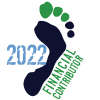I am new to running in
I am new to running in minimalist shoes (it seems I should state that I wear VFFs) and actual barefeet on a couple of occasions. I LOVE running barefoot, and I love running in the VFFs. I feel like I was born to run this way. I grew up barefoot, and as an adult go barefoot most of the time. I agree with the experienced runners on this post about TMTS. I like to push myself to go farther, do better and it's seriously hard to hold myself back from running my normal weekly miles. I just can't do it yet in BF/VFFs. It hurts something every time i do. My calves hurt in the beginning. Then my ankle started hurting and is swollen. Now that I've got a better form my hamstring hurts. So, I am holding back, and listening to my body, but the joy of running is beckoning me. Sigh. I haven't been able to run the past couple of days and I'm itching to get out there. I'm glad I joined this society, it's given me some good tips and it lets me know this is normal, to go slow, verrrry slow lol.
I am new to running in minimalist shoes (it seems I should state that I wear VFFs) and actual barefeet on a couple of occasions. I LOVE running barefoot, and I love running in the VFFs. I feel like I was born to run this way. I grew up barefoot, and as an adult go barefoot most of the time. I agree with the experienced runners on this post about TMTS. I like to push myself to go farther, do better and it's seriously hard to hold myself back from running my normal weekly miles. I just can't do it yet in BF/VFFs. It hurts something every time i do. My calves hurt in the beginning. Then my ankle started hurting and is swollen. Now that I've got a better form my hamstring hurts. So, I am holding back, and listening to my body, but the joy of running is beckoning me. Sigh. I haven't been able to run the past couple of days and I'm itching to get out there. I'm glad I joined this society, it's given me some good tips and it lets me know this is normal, to go slow, verrrry slow lol.








